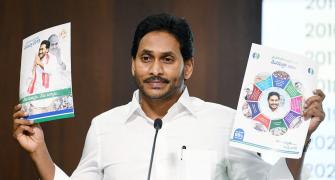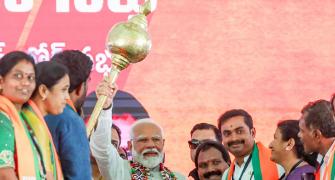The staggering of OBC reservations may have reduced political temperatures but the issue of the impact on quality remains wide open.
Ravinder Kaur
Associate Professor, Department of Humanities and Social Sciences, IIT Delhi
'The solutions to the teachers' shortage will sound the death knell for the IITs'
The Bill that sanctions 27 per cent reservations for OBCs allows the IITs, IIMs and other institutions of higher education to stagger the admission process over three years. Second, it does not provide for exclusion of the "creamy layer", and third, it exempts certain research institutions from the "burden" of reservations.
Whether this staggering will solve the problems that the new quota policy poses for institutions such as the IITs is a moot point. The IITs have made it clear that two of the big hurdles facing such an unprecedented expansion are the availability of physical infrastructure and teaching faculty.
Even if the government provides the money suggested by the Moily interim report to the institutes, it will take them some time to develop the requisite physical infrastructure. In the meanwhile, the already existing pressure on facilities will increase.
A much bigger hurdle, however, is increasing requisite faculty strength in record time. The IITs are already hugely short of faculty -- by approximately 20 per cent. This is due to competition (higher salaries) offered by the non-teaching market for qualified engineers. Further, the IITs demand fairly rigorous training and high standards for the faculty that they recruit.
Three suggested solutions to meeting the deficiency of teachers are: raising the retirement age, fast-track appointments, and lowering of qualifications.
The first is only advisable in exceptional cases; the second is fraught with possibilities of cutting corners and opening the door to outside interference and political pressures; and the third and final solution, if implemented (removing PhD as a minimum qualification is being suggested) will sound the death knell for these institutions.
Until adequate faculty is recruited, there will be a perceptible decline in the quality of teaching. Large classes lead to poorer student-teacher interaction; the larger number of weak students (if OBCs are brought in with lower cut-offs) will, as a consequence, perform even poorly. The overburdened faculty, if asked to do double shifts or take classes for a very large number of students, will lose its enthusiasm.
The IITs place a large premium on their faculty producing research papers and developing patents. With heavy teaching loads, this will become impossible and may lead to further attrition of teaching faculty.
The faculty also plays a critical role in developing research interests of the students, and in addition, it trains teachers of other engineering institutions (substantial number of such teachers come to IITs for their M Tech and PhD degrees). Recruiting IIT faculty without an adequate research background will break the essential link between teaching, research and innovation, a link that the IITs need to strengthen rather than weaken, if they are to keep their brand intact.
C S Venkata Ratnam
Director, International Management Institute, New Delhi
'Small concessions on marks are already given to those with deep pockets -- that doesn't hurt merit!'
The Constitution of India affirms that preferential treatment to disadvantaged groups is in consonance with the concept of justice and equality embedded in its preamble.
Some countries like India pursue preferential treatment or affirmative action through quotas, while others do it through goals and timetables and incentives for pursuing affirmative action through voluntary action. The quota system has done wonders in some southern states in India, especially in Tamil Nadu where a substantial proportion of the backward communities now fare equally, if not better, as candidates from other communities. This was not achieved overnight. It took a social movement and decades of sustained public policy, favouring quotas and determined government administration. Compared to the south, the experience in the north is weak because the legislative mandate is not sufficiently backed by political will for steadfast implementation.
Those who oppose quotas argue about the possible dilution in standards and deterioration in quality. If there could be quotas for management, companies and NRIs, why not for the socially disadvantaged. Quotas for the underprivileged is a more civilised proposition than quotas for the privileged.
Even within the quota system, to maintain minimal standard and quality, one can consider lower cut-offs than completely dispensing with minimal requirements. It is common to allow relaxation in age, marks in qualifying examinations as well. Therefore, to encourage people from disadvantaged groups, one can have lower cut-offs alongside quotas.
Marginal concessions -- say, 5-15 per cent or percentile -- would be easily justified and cannot be countered by the anti-quota lobby as such concessions are being already given to those with deep pockets in the name of management quota, company-sponsored and the NRI category, among others. If merit can be compromised for the benefit of the rich and the promoters of educational institutions, it can be done for the benefit of the disadvantaged groups as well.
If quotas constitute a push strategy, incentives for affirmative action constitute a pull strategy. The Indian government, like that in North America, should say that we do business with only those who implement quotas sincerely and help the state achieve its stated social objective. We need both push and pull strategies.
The real challenge is integration where affirmative action provides for inclusive education and employment system instead of proving to be socially divisive. After six decades, the government and the central public sector have failed to integrate the SC/ST employees into the mainstream.
They need to learn from some of multinational companies such as Xerox and HP as how they became inclusive corporations providing equal opportunities to people from diverse groups.








